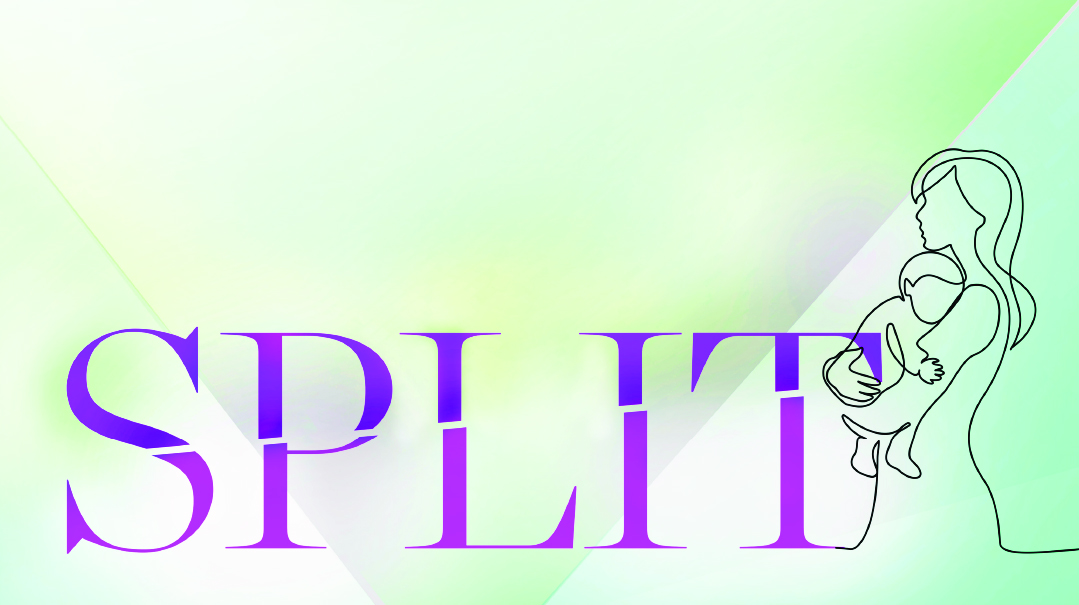Split: Chapter 6
| February 10, 2021Three years after he was born — and 13 years after we married — my husband and I were expecting again
D

uring Akiva’s first cleft surgery, the surgeons sewed the lip and muscles closed. With his lip covered in stitches and gauze, it was nearly impossible for our child to eat.
He couldn’t nurse or use a bottle — both were not only painful, but could risk splitting his incision again. Instead, we fed him via syringe. Drop by drop, we squeezed milk into his mouth. My mother-in-law was an unbelievable help, often taking over the feedings so that we could rest. She supported us and gave us chizuk as only a loving mother and bubby could.
Each meal took hours, which was hard for us as parents, but it was even harder for us to watch Akiva suffer. It wasn’t only the way he waited hours to get his full meal. For two weeks his arms were in restraints so he wouldn’t touch his face or pull at his wounds and damage the delicate work the surgeon had performed.
He was so uncomfortable, and I often found myself crying as I soothed him. “This is for you, Akiva. I promise that we’re doing this for your own good.”
Finally, the wound healed. We were able to remove both Akiva’s restraints and the gauzes on his face. Akiva’s nose was now slightly flatter, the result of the skin pulling tauter around the lip. He was quite the adorable-looking little guy, if I may say so myself.
We started speech therapy a few weeks post-surgery. At first, Akiva’s therapists focused on motor skills like closing his mouth and blowing to strengthen his oral-facial muscles. Akiva had less need for therapy than children whose cleft involves the palate — those kids typically need more extensive speech therapy as they grow older to work on methods of making the voice sound less nasal.
B’ezras Hashem, Akiva progressed as any child would. By the time he reached three years old, he was a heavenly, albeit rambunctious, toddler.
And he was also about to become a big brother. Three years after he was born — and 13 years after we married — my husband and I were expecting again.
“There are two heartbeats,” the doctor mentioned with a huge grin. “You know what that means, right?”
Could it be? Twins! My heart felt so full. Baruch Hashem, our family was growing fast. Would it be two boys? Two girls? One of each? Would they let me dress them in matching clothes? Would they be best friends? How would Akiva react?
I was bubbling with questions at our 20-week ultrasound appointment, but one rang louder than the rest. Would the babies be okay?
It was unlikely that the condition was genetic, but a mother’s heart never stops worrying. “Can you check their faces and make sure neither of them have a cleft?” I asked the ultrasound tech.
She nodded and maneuvered the machine to take a look. “Baby A looks perfect,” she said. “And Baby B…” she pushed the probe around to get a better glimpse of the baby’s face. “Well, it looks like Baby B is playing a little game of peek-a-boo with us. She’s hiding.”
The tech moved the probe a bit more. “Ah, here she is,” the tech said, turning the screen so that we could see our daughter’s face.
The child’s arm was raised, her lips covered by her splayed hand. It was impossible to see if she had a cleft or not.
“Is there any way to move the baby’s hand?” my husband asked. We wanted to be certain that all was well.
The technician poked, and the baby’s entire head bent out of view. Another poke, but the baby was dodging the camera. It took a while until the little one’s arm moved away and we could get a clear picture.
And that’s when I knew exactly why the baby was hiding from us all that time. The little child, our little girl, had covered her face for us because she didn’t want to break her mommy’s heart.
There on the image, clear as the time we’d seen it in Akiva’s ultrasound, was our baby’s cleft.
to be continued…
(Originally featured in Family First, Issue 730)
Oops! We could not locate your form.


